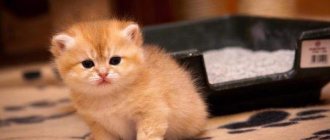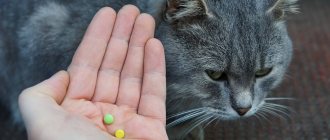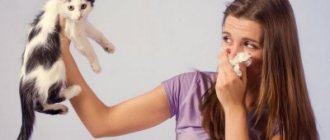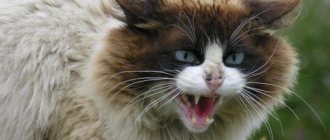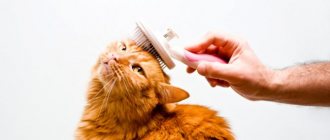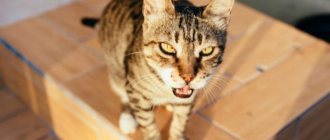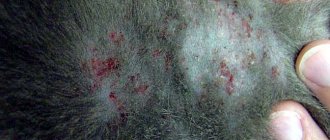Vaccination means the introduction of an animal antigen into the body in order to form immunity to a given infectious disease. Vaccinations for dogs and cats will help significantly reduce the risk of infection and make it easier to transfer the disease if infection does occur.
Note! For subsequent participation in exhibitions and traveling abroad with a pet, it is very important to have a correctly issued and completed veterinary passport.
All information about the vaccinations received by the animal is entered into a veterinary passport issued by a veterinarian. In this case, the following data is indicated: date of vaccination, type of vaccine, registration number in the registration register.
General rules for vaccinating pets
The vaccination rules for both dogs and cats are the same:
- The animal must be healthy at the time of vaccination.
- 10 days before vaccination, it is necessary to carry out treatment against skin parasites - ticks, fleas, lice, as well as deworming.
- Although your pet will be examined by a veterinarian before vaccination and will make sure he is in excellent health, it is advisable to monitor the animal, its appetite, general condition for 3 days before vaccination, and also measure its temperature at the same time.
Normally, in healthy dogs it is 37-39C, in puppies – no higher than 39.5C, in kittens – from 38.5 to 39.5C, and in adult cats and cats – 38-39.5C.
Remember! If your pet is allergic, notify your veterinarian. It is possible that the animal will be given diphenhydramine before vaccination.
Correcting errors during intramuscular injections
The owner's hesitant actions are usually caused by anxiety in the process of working with the cat, and the stress must be leveled. Studying the material on how to give an intramuscular injection to a cat is sometimes not enough, so it is worth familiarizing yourself with the information on how to act in unforeseen situations:
- The needle hit a bone, ligament, joint, or sciatic nerve of the pet. To prevent this from happening, you must follow the instructions and do not prick your leg at random, but confidently fix the muscle between your thumb and index finger, and only then make a puncture. If the puncture does not happen where planned, it’s okay. It is necessary to slightly pull the needle back and continue injecting the solution.
- The cat scratches during the injection. It is worth postponing the procedure for a while, visiting a pet store and purchasing “soft paws”. These are overlays that are attached with superglue and cut off as the nails grow. With them the cat will not be able to scratch.
- An air bubble has entered the muscle. If the procedure for removing air from the syringe was previously carried out, and a small bubble got in, it will not harm the pet.
- I have to give several injections with different medications. It is worth asking your veterinarian to install a catheter first. In the absence of a catheter, you will have to give injections frequently, and soothing drops, for example, Kot Bayun, will help to relax the cat.
- During the injection into the withers, drops of medicine appeared on the back side. This means that the needle has pierced the stretched skin on both sides, and it is not difficult to fix the problem; just pull the needle slightly towards you.
In any situation, you should control yourself, act calmly and confidently. This will calm the animal and reduce the risk of problems.
Dog vaccination
It is dog vaccination (at home or in a veterinary clinic) that allows you to protect your pet from rabies, hepatitis, canine distemper, leptospirosis and parvovirosis (parvovirus).
The vaccination schedule for cats includes vaccination against rabies, calcivirus infection, viral rhinotracheitis and feline panleukopenia.
The vaccination schedule for dogs is drawn up depending on the vaccines used: Nobivak (Netherlands), Eurikan or Hexadog (France), Multikan-8 (Russia), against ringworm - Vakderm or Polivak-TM (Russia).
Hormonal injections for cats against pregnancy
Of course, the most radical, most effective and healthiest thing is castration-sterilization. The reproductive instinct is something that a cat cannot cope with on its own.
It is during these few periods of the year that she completely stops thinking, and all her desire and behavior is aimed at prolonging the race.
A cat comes into heat for the first time between 7 and 9 months of age.
The estrus period takes place in several stages, which can be determined by the following signs:
- Swelling of the reproductive organs;
- Frequent trips to the litter tray;
- Frequent licking of the pelvic area;
- Loss of appetite;
- Increased need for affection - the pet begins to intensively demand attention and rub against surrounding objects, falls on its back and rolls around, making purring sounds;
- Attempts to escape from home;
- The cat constantly meows, does it loudly and protractedly;
- The animal arches its back. Raises its tail and steps with its hind legs.
During this period, the pet’s mood deteriorates sharply, irritability and aggressiveness appear.
The cat wants to go for a walk. The pet owner does not enjoy this behavior either.
Cats reach final sexual maturity between 1 and 1.5 years.
Removing symptoms, as well as completely eliminating the urge to estrus, asking a cat that does not lead to pregnancy, is possible using 3 methods:
- The use of drops that reduce libido;
- Sterilization is a surgical procedure that involves partial or complete removal of the reproductive organs;
- Injections that reduce the reproductive instinct.
Immediately after administration of the drug, a slight local painful reaction is possible.
Contraceptive injections and tablets, with a certain dosage, affect the cat’s hormonal levels in a short period of time, resulting in a delay in estrus.
Vaccination of cats
Often the owners of these animals do not know what vaccinations are given to cats and when, because they believe that vaccination is not necessary for their pet. But even if it is constantly in the apartment, a cat can get sick - the infection can be brought into the house on clothes, shoes, and dirty hands. There is a risk of contracting an infection when visiting a veterinarian while waiting for your turn.
Therefore, any, including complex vaccinations for cats, in the most optimal form, should be done at home.
The most famous vaccines for cats are Nobivak (Netherlands), Leucorifelin (France), Multifel-4 and Polivak-TM (Russia)
Vaccination schedules for cats and dogs:
Vaccination schedule with Nobivac (Netherlands):
If the first vaccination is given at 4-6 weeks, the dry live vaccine against canine distemper and canine parvovirus, Nobivac Puppi DP, is used.
At 8-9 months - complex vaccination Nobivac DHPPI + Lepto.
Then after 3-4 weeks Nobivac DHPPI + Nobivac RL. Further vaccination is carried out annually.
If the first vaccination is given to a puppy at 2 months, Nobivac DHPPI + Nobivac Lepto vaccination is performed. After 3 weeks Nobivac DHPPI + Nobivac RL. Then annually once Nobivac DHPPI + Nobivac RL.
Vaccination scheme Eurican (France):
For vaccination, Eurican DHPPI2 (against adenovirus, plague, parvovirus enteritis, parainfluenza) + Eurican L (against leptospirosis of 2 types) or Eurican RL (against rabies and leptospirosis of 2 types) is used.
Primary vaccination Eurikan DHPPI2-L consists of 2 injections: 1st at the age of 7 weeks, 2nd after 3 - 5 weeks. Primary vaccination Eurikan DHPPI2+LR: at the age of 3 months.
Revaccination after a year.
Scheme for the Hexadog vaccine (France):
used starting from 3 months of age, revaccination every other year. Used against adenovirosis, distemper, parvovirosis, major leptospirosis and canine rabies.
Scheme for the Multikan-8 vaccine (Russia):
- Vaccination against canine distemper virus, canine adenovirus type 2, parvovirus and canine coronavirus, leptospirosis and rabies.
- Puppies are vaccinated at 8-10 weeks of age and again after 21-28 days.
Revaccination of puppies is carried out at the age of 10-12 months. Adult dogs are vaccinated once a year.
Subcutaneous injection in stages
Prepare a flat, non-slip surface and all the necessary tools in advance. Secure your pet and try to calm it down with gentle talking and stroking. Your assistant can take on the calming role. Do not shout or scold a frightened animal. Over time, it will get used to the procedure and become calmer.
Thanks to the natural protective layer, the mustachioed pet’s skin will not have to be treated with an antiseptic. But your hands will need thorough disinfection: before the procedure, be sure to wash your hands with soap and treat them with an antiseptic solution.
After all the preparatory steps, immediately proceed to follow the instructions explaining how to give an injection to a cat at the withers:
- Open the ampoule and take the solution. Don't forget to cap the needle afterwards. It can only be removed before immediate insertion. If you accidentally touch the needle, replace it with a new one. Otherwise, an infection may enter the animal's body.
- Grab the skin on the scruff of the neck with your fingers and gently pull it a couple of centimeters. The resulting subcutaneous “pocket” lacks important nerve endings, so it is well suited for further manipulation. Remember to calm your pet throughout the procedure.
- Spread the fur in the found area, remove the cap, bend the needle at an angle of 45 ° relative to the spinal column and carefully insert it. The permissible insertion depth is 1-1.5 cm. The entire insulin needle is inserted, since its length is much shorter than usual.
- Gently press the plunger and begin to inject the medicine slowly. Try to act smoothly. The slower the insertion, the more painless it is. Please note that sudden wetness of the fur indicates that you have not gotten under the animal's skin.
- Carefully remove the needle after injecting any remaining medication, and then release the fold. The droplets of solution remaining on the tip of the spout are taken into account in advance when choosing a dosage. There is no need to administer an additional amount of the drug. The wound is also not disinfected.
- Hold your pet in your arms for a few minutes, massaging the injection site. Pet him and give him a treat for being brave.
When finished, place all used instruments in a durable plastic container. Indicate on the lid that the container contains sharp objects. This will help avoid injury to people searching dumpsters.
Before each procedure, be sure to check the expiration date of the drug and the tightness of the packages. Do not inject the medicine into broken skin and make sure it is applied as directed.
When self-administering the oil preparation, avoid getting it into the vessel. After puncturing the skin, pull the plunger back slightly. The appearance of blood will indicate entry into the bloodstream, which is very dangerous and requires calling a veterinarian. It is safer to trust this type of drug treatment to the staff of a veterinary clinic.
Additional vaccinations (as needed):
against dermatomycosis (microsporia and trichophytosis) with the Polivak-TM vaccine (Russia), carried out 2 times with an interval of 10 - 14 days, annually,
or the Vakderm vaccine (manufacturer Vetzverotsentr, Russia), done 2 times with an interval of 10 - 14 days, annually.
Regimen for the Nobivac vaccine (Intervet, Netherlands): Nobivac Tricat: against viral rhinotracheitis, calicivirus infection and feline panleukopenia.
Done at the age of 8-12 weeks - the first vaccination. After 3-4 weeks - re-vaccination. It is given together with the Nobivac Rabies rabies vaccine.
Scheme for Leucorifelin (Merial, France):
The first vaccination with Leucorifelin (against panleukopenia, herpesvirus and calicivirus) is at 7-8 weeks.
Revaccination - after 3-4 weeks with the Leucorifelin Quadricat vaccine (against panleukopenia, herpesvirus and calicivirus plus rabies).
Revaccination must be repeated every year.
Scheme for Multifel-4 (Narvak, Russia):
- Multifel-4 is used against panleukopenia, rhinotracheitis, calicivirus and feline chlamydia viruses.
- The first vaccination for a kitten is at 8-12 weeks.
- Repeated after 21-28 days.
- Revaccination - annually
Additional vaccination (if necessary) - in addition to the schemes above.
Polivak-TM (Russia) - vaccine against ringworm.
It is done annually, twice with an interval of two weeks.
Complex vaccination for cats: selection of complex vaccines
Our market offers polyvaccines from several of the world's largest and domestic manufacturers. All of them are certified and approved for use by state veterinary supervision. Your veterinarian will advise you on which comprehensive vaccination to use for your pet. At our center, specialists will discuss with you the choice of a particular vaccine, since each of them includes its own components.
- The most popular vaccines:
- produced (Holland) - “Nobivak Triket”, “Nobivak Forket”, “Nobivak Rabies”,
- “Quadricate” and “Leukorifelin” from the French manufacturer Merial.
- Russian vaccine - "Multifel-4"
- live vaccines "Purevax" from Merial, France.
- "Fel-O-vax" made in the USA.
All of these polyvaccines contain components that protect against rhinotracheitis, calciverosis, panleukopenia, and selectively against rabies, chlamydia, herpesvirus, and feline viral leukemia.

